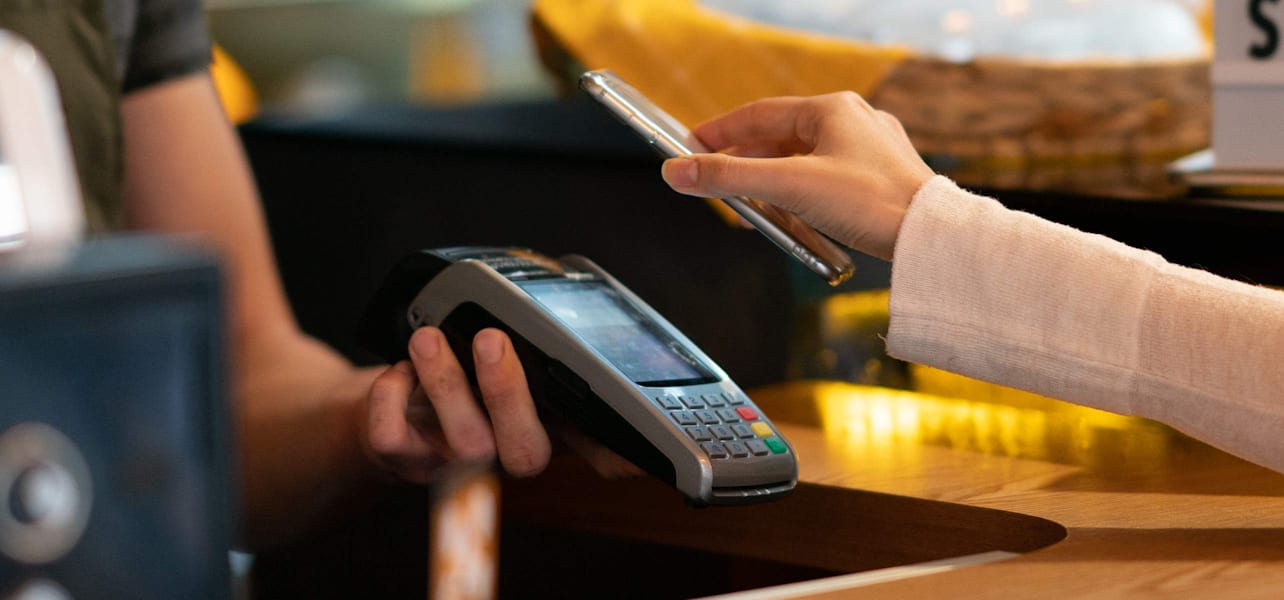In a world of social distancing and mask-wearing, touch-free transactions are quickly becoming the norm.
We’ve seen many small businesses encourage customers to only use credit cards or exact cash to cut down on contact and prevent spreading germs. Whether it’s tipping your hairdresser via Venmo or using Apple Pay at the grocery store, we (fortunately) live in a world where cashless payments are possible.
Our friends at Square, experts in the payment space, have shared some great tips for minimizing contact at checkout.
- Take contactless payments.
- Disable signature and receipt screens.
- Set up recurring payments.
- Charge with invoices.
- Use a virtual terminal.
1
Take contactless payments.
Though originally created as a more secure alternative to magnetic-stripe cards, contact-free payments also prevent any physical contact between a customer’s smartphone or credit card and your POS…so you don’t have to worry about passing credit cards back and forth.
Start using a contactless payment reader at the checkout counter in your brick-and-mortar business, and as a quick solution for curbside orders. A contactless payment reader lets you accept mobile payments, like Apple Pay and Google Pay.
2
Disable the signature & receipt screens.
In the US and Canada, card providers don’t require signatures for tap, dip, or swipe payments. If you stop collecting signatures for payments, it won’t affect your processing rate. And if you use the Square app, you can disable customer signatures for all card payments.
If you do need to get a signature, encourage customers to sign with their finger on a touchscreen – offer them hand sanitizer before and after, and wipe down the screen in between transactions. Or, let customers sign a physical paper receipt with a sanitized or single-use pen (let them keep it as a branded souvenir!).
3
Set up recurring payments.
If your small business offers a subscription or regular service plan, consider setting up recurring payments – all you need is a customer’s card on file. In addition to cutting down on in-person contact, recurring payments can make life easier for you and your customers… just make sure you follow a set schedule when you charge customers.
If you don’t currently offer a subscription or service-based business, here are some ideas for getting started.
- Do you own a flower shop or garden centre? Offer a bouquet (or plant) of the month subscription.
- If you run a housekeeping company, use a recurring payment system to charge customers for their monthly or weekly service.
- Own a specialty food or wine shop? Create a monthly picnic basket that bills customers each cycle.
- Do you operate a landscaping company? Set up automatic payments for monthly lawn maintenance.
4
Charge using invoices.
Small business owners in any industry can use invoices, whether you’re billing for a service or a product. With an invoice, your customers can pay you electronically… so there’s no need for physical interaction with you (or your POS). Plus, invoices are a more secure alternative to collecting payment information over the phone.
Think about using an online or mobile invoicing tool so you can manage payments wherever you are – and customers can pay using their phones.
5
Use a virtual terminal.
Another option for card-not-present or remote billing needs is a virtual terminal. A virtual terminal turns your computer (or phone, or tablet) into a instrument to process card payments and lets you manually enter and process payments using a web browser.
Check out Square’s virtual terminal and see if it will work for you.




